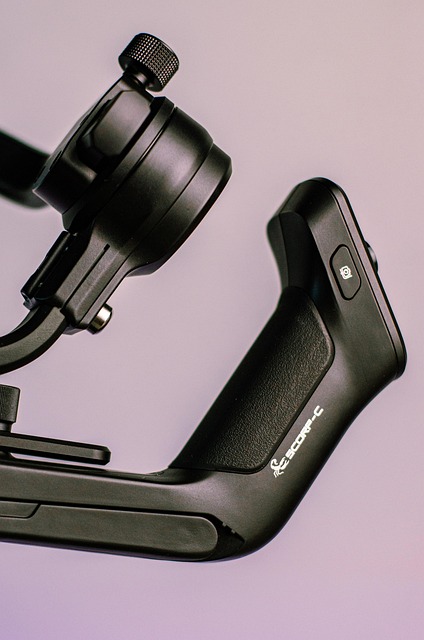Segmenting SMS lists using AI chatbots and advanced analytics improves engagement by dividing subscribers into groups based on demographics, purchase history, or interests. Targeted messaging, personalized to each segment, boosts response rates. Demographic and behavioral data, integrated with CRM systems, enables timely communications like discounts or promotions. Automation tools analyze customer behavior to optimize message timing and frequency, enhancing open rates and conversions in SMS marketing for engagement.
SMS marketing is a powerful tool, but maximizing its impact requires strategic list segmentation. By dividing your contact list into targeted groups based on demographics, behaviors, interests, and preferences, you can deliver personalized messages that resonate with each audience segment. This article explores the art of segmenting SMS lists to enhance engagement performance, covering key strategies from identifying target audiences to optimizing message timing and frequency.
- Understanding SMS List Segmentation
- Identifying Target Audiences for Personalized Campaigns
- Implementing Demographic and Behavioral Criteria
- Enhancing Relevance with Interests and Preferences
- Optimizing Timing and Frequency of Messages
Understanding SMS List Segmentation

Segmenting your SMS list is a powerful strategy to elevate the effectiveness of your SMS marketing for engagement efforts. It involves dividing your subscriber base into smaller groups based on shared characteristics, such as demographics, purchase history, or specific interests. This targeted approach ensures that messages are relevant and personalized, significantly boosting recipient interaction. By segmenting your list, you can send tailored content that resonates with each group, increasing the likelihood of conversions and fostering stronger customer relationships.
AI chatbots play a crucial role in optimizing this process by automating list segmentation and personalizing text message marketing campaigns. They analyze vast amounts of data from CRM systems to identify patterns and create highly precise segments. This technology enhances the efficiency of your marketing efforts while allowing for more granular control over how you communicate with your audience, ultimately driving better engagement results.
Identifying Target Audiences for Personalized Campaigns

Identifying your target audiences is a crucial step in enhancing SMS engagement. Through advanced analytics and customer segmentation, businesses can pinpoint specific groups with shared characteristics, behaviors, or interests. This granular approach enables personalized campaigns that resonate better with each audience segment. For instance, young adults might respond to trendy promotions, while professionals may prefer time-saving solutions tailored to their busy lifestyles.
Automating this process through social media marketing automation tools can be a game-changer in SMS marketing for engagement. These tools analyze vast customer data, including interactions with previous campaigns and preferences expressed on social platforms, to create detailed buyer personas. Understanding these personas helps businesses design targeted messaging that moves prospects through the sales funnel effectively.
Implementing Demographic and Behavioral Criteria

To enhance SMS marketing for engagement, brands should consider implementing demographic and behavioral criteria for segmenting their lists. Demographic factors such as age, gender, location, and income level provide valuable insights into consumer preferences and behaviors. By understanding these aspects, businesses can tailor their messages to resonate with specific groups, increasing the likelihood of higher engagement rates. For instance, a clothing brand may send targeted promotions for winter apparel to areas experiencing colder climates.
Behavioral criteria, on the other hand, track customer interactions like purchase history, website visits, and response rates to past campaigns. This data helps in categorizing customers based on their level of interest and involvement with the brand. For example, a retail business can create segments for frequent buyers and occasional shoppers, allowing them to offer personalized discounts or exclusive deals to encourage repeat purchases through SMS marketing. Integrating these strategies within a robust customer relationship management (CRM) system further optimizes engagement by enabling detailed marketing analytics, ensuring that every communication is relevant, timely, and likely to drive action.
Enhancing Relevance with Interests and Preferences

Personalization is a powerful tool in SMS marketing for engagement. By segmenting customer lists based on interests and preferences, businesses can deliver targeted messages that resonate with individual recipients. This strategy enhances relevance by ensuring that each text message aligns with the specific interests of the receiver, creating a more meaningful connection. For instance, an ecommerce solution might categorize customers who frequently purchase sports gear into their own group, allowing for tailored promotions related to new athletic shoe releases or seasonal sports equipment sales.
This level of customization improves customer satisfaction and encourages higher engagement rates. Marketing automation platforms can play a crucial role in implementing this strategy by automatically sorting customers based on predefined criteria, such as purchase history, browsing behavior, or explicit preferences shared through opt-in forms or surveys. Integrating marketing automation with a robust customer relationship management (CRM) system enables businesses to collect and analyze valuable data, leading to more informed decisions for creating relevant and impactful SMS campaigns.
Optimizing Timing and Frequency of Messages

In SMS marketing for engagement, optimizing the timing and frequency of messages is paramount. Understanding your audience’s behavior and preferences is key to this strategy. By analyzing past interactions and leveraging data insights, businesses can determine the best times to send messages, ensuring they reach recipients when they are most receptive. This precise timing improves open rates and click-throughs, as users are more likely to engage with content when it aligns with their routines or interests.
Moreover, tailoring message frequency according to individual preferences through marketing automation tools can significantly enhance the effectiveness of SMS campaigns. Integrating this approach with a robust CRM system allows for personalized communication, fostering stronger connections with customers. This combination not only improves engagement but also guides prospects through the sales funnel more effectively, ultimately driving conversions and business growth.
Segmenting SMS lists is a powerful strategy to elevate your SMS marketing for engagement. By understanding your audience on a deeper level, you can create personalized campaigns that resonate with specific interests and preferences. Leveraging demographic and behavioral criteria, along with optimizing timing and frequency, ensures your messages find the right people at the right time. This tailored approach drives higher engagement rates and strengthens customer relationships, ultimately boosting the performance of your SMS marketing efforts.
